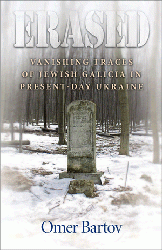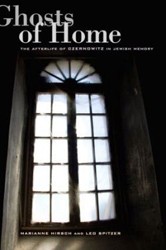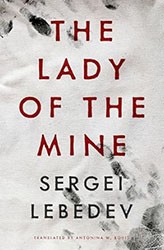An amazing exploration of the relationship between two marginalized peoples, Paul Robert Magocsi and Yohanan Petrovsky-Shtern’s narrative is accompanied by 335 color illustrations and 29 maps in a well-designed oversized page format.
After an introduction that focuses on the stereotypes and misperceptions that Jews and Ukrainians have had about either other over the centuries, the authors of this interdisciplinary work lay out twelve chapters, at once accessible and complex, covering a wide range of topics. One explores physical and human geography, another explores history, while others examine economic life, traditional culture, religion, language and publications, material and artistic culture, and diaspora life as defined and experienced by Ukrainians and Jews. Latter chapters focus on the contemporary situation.
The structure of each chapter is such that the section featuring some aspect of the Jewish situation in Ukraine is framed by the necessarily much larger treatment of the Ukrainian experience and situation. This pattern often becomes complicated by the fact that the Jewish situation is not necessarily uniform throughout Ukraine and because the story of Ukraine is a story of flux. Jews of Galicia, Bukovina, and Transcarpathia require treatment distinct from that of Jews who live — or once lived — elsewhere in Ukraine.
Thus there are such subtopics as “Jews during Ukraine’s revolutionary era,” “Publishing industry and Jewish society,” “Economic life and interaction with Jews,” and “Jewish orchestral and operatic music.” One tantalizing subtopic, “Jewish-Ukrainian literary cross-fertilization,” is in the service of helping readers understand that “affinities between the two peoples were far from merely literary.” However, the book makes clear that for the most part the chances for sympathetic understanding were typically squandered rather than sought out and nourished.
Nevertheless, the effort made in this gorgeous, abundantly detailed, and adventurous study is heartwarming. It is an attempt for the peoples to get to know one another in a way that has never been possible before. They need to know about the contributions that each group has made, if only by proximity, to the other. For example, that Jews helped urbanize Ukraine and develop its market economy. That Ukraine was the homeland of great Jewish writers, such as Sholem Aleichem, and thinkers who shaped seminal concepts that guide Jewish life today. That Nazi Germany’s occupation led to the death of 4,000,000 Ukrainian civilians and 1.4 million Ukrainians in uniform.
Jewish readers will be tempted to do what I have done in preparing this review — which is to seek out the gems of information about Jews in Ukraine and skim over the larger, complicated story of the Ukrainians themselves. This would be a mistake. Colonized and marginalized, ethnic Ukrainians were often in a certain sense people without a country — that is, people without power. Jews and Ukrainians were often pitted against one another by those who held power as a means of retaining it.
And the Ukrainian story is an important one, now more than ever. This brave book give readers the knowledge that they need to open their minds, to move forward, and to gain respect and appreciation for “the other.”
Philip K. Jason is professor emeritus of English at the United States Naval Academy. A former editor of Poet Lore, he is the author or editor of twenty books, including Acts and Shadows: The Vietnam War in American Literary Culture and Don’t Wave Goodbye: The Children’s Flight from Nazi Persecution to American Freedom.




